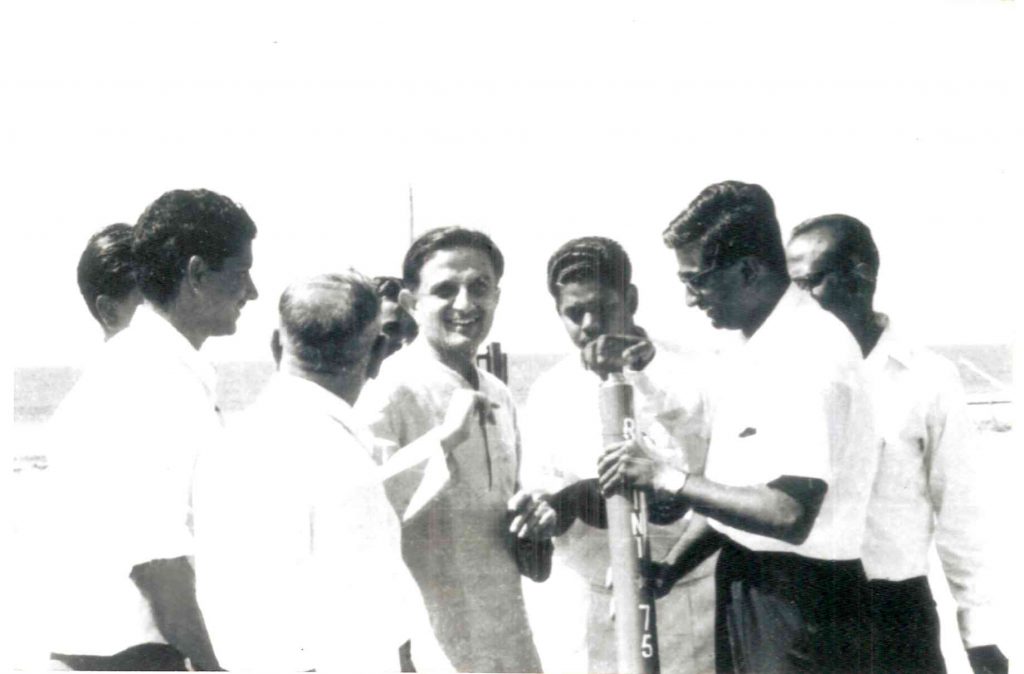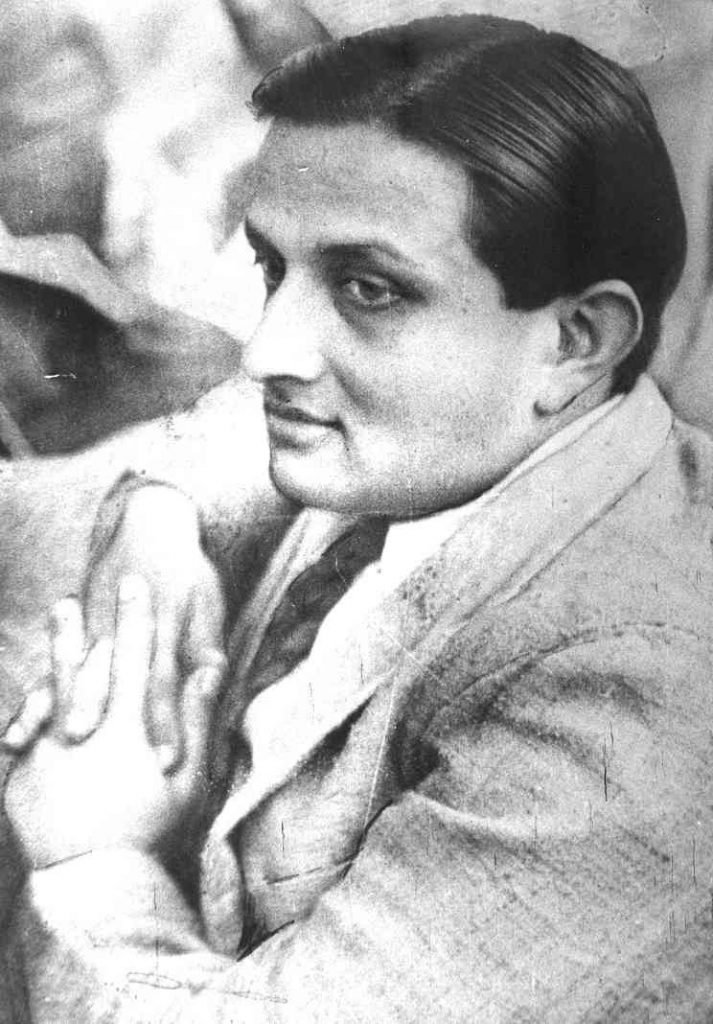2019 is the birth centenary of Vikram Sarabhai, the founder of India’s space programme, who was born in Ahmedabad on 12 August 1919. Sarabhai, pursuing his studies at Cambridge when WWII broke out, returned to India to work with CV Raman at IISc, where he also met Homi J Bhabha. In these excerpts from her book Vikram Sarabhai: A Life, Amrita Shah recounts his time at the Institute.

In September 1939, war broke out. Ambalal was frantic with worry. He insisted both brothers come home immediately. It was some months into the war, however, that Vikram actually made his way back to India. The interruption in his studies was a matter of concern. He had by then completed his undergraduate studies in physics and mathematics. He made inquiries with the authorities at Cambridge about the possibility of continuing his work back home and was informed that he could work on his postgraduate research in India as long as it was under the supervision of CV Raman. So, in 1940, Vikram, armed with a tripos in the natural sciences, returned to India and headed for the Indian Institute of Science in Bangalore. […]
It is likely that Raman received Vikram with a certain degree of warmth. He knew the Sarabhais well; Ambalal had written to him, requesting him to take his son on as a student. He was also responsible for nudging Vikram towards the area of research in which he was to work for the rest of his life.
The area in broad terms was cosmic rays, the penetrating radiations coming from outer space, the existence of which was suggested by CTR Wilson, best known as the inventor of the cloud chamber in 1911. […]
Robert Millikan, an American scientist and winner of the Nobel Prize in 1923 for his work on the electron charge, was the man who had actually coined the term ‘cosmic rays’. In 1937, he had come to India to acquire data for his world survey of cosmic ray intensity, during which time he visited Raman. In 1940, he came again to carry out stratospheric balloon ascents.
In his PhD thesis, Vikram points out that most cosmic ray research at the time was being carried out in laboratories in the temperate region; South India, on the other hand, located right on the path of the magnetic equator, was of particular significance for cosmic ray investigations. The conjunction of these facts, amply demonstrated by Millikan’s visits, possibly led Raman to suggest, as Vikram goes on to claim, “the initiation of experimental research in this field at Bangalore.” “It was hoped at first,” Vikram adds, “to make a more detailed high-altitude survey at various latitudes in India in order to supplement Professor Millikan’s results, but wartime difficulties in the procuring of the necessary balloons and other radio apparatus prevented embarking on this.”
The apparatus Vikram picked instead was the Geiger counter. […] Vikram’s early experiments led to his first paper ‘The Time Distribution of Cosmic Rays’ which he presented to the Indian Academy of Sciences in 1942. Introducing him, Raman said, “Young Vikram Sarabhai has been brought up with a silver spoon in his mouth. He has started to do original experiments and is presenting his first paper to a scientific audience. I have great faith in him – that he will contribute much to India and to the growth of science in our country.”
Whether this speech reflected Raman’s genuine belief in Vikram’s abilities or whether the hyperbole had more to do with the family’s track record is not known. Vikram for his part had genuine regard for his supervisor. A few years later, when Raman wanted to break away from the IISc and form his own Raman Institute, it was Vikram who put him in touch with Ahmedabad-based industrialists and helped him collect a tidy capital. […]
A relationship he formed with another formidable name in Indian science at the IISc was to be an even more significant part of his life. Homi Bhabha, the man who was to found India’s atomic energy programme and loom like a Colossus over Indian science until his death in the mid-1960s, had gone to Cambridge a decade before Vikram. […] He had been holidaying in India when the war broke out. The IISc had offered him a readership which he had accepted. […] It was an extraordinary circumstance then that brought these two gifted individuals together. In time, the intriguing similarities and the differences of their approach would become clear; they would also develop a close professional rapport of great significance for the country’s technological development. As young men in Bangalore, however, there were other, more superficial common factors to draw them to each other’s company.

In the first place, both were men of means. Bhabha’s grandfather had been an inspector general of education in the state of Mysore but he was related through his aunt to the Bombay-based industrial family, the Tatas, that rivalled the Sarabhais in wealth. Both hailed from western India, an anomaly at a time when most scientists tended to come from the south or the east. They were sophisticated, though Bhabha was the more westernised of the two. They were good looking – Bhabha with his dark, brooding mien and Vikram with his delicate features and complexion so translucent that Ramaseshan was moved to describe it as paal vazhiarathu, meaning a baby’s skin with the appearance of milk flowing below the surface. Both men also had passions outside science and a taste for the good life.
Many evenings, after work, they would head off to the posh West End Hotel, to meet with friends, mainly local, self-styled intellectuals, one of whom was an attractive Sri Lankan woman called Anil D’Silva. These apparently playboy-type excursions scandalised their co-students who were mostly middle-class, conservative Tamil Brahmins. Ramaseshan recalls wryly, “We used to look at them with envy.”
Money certainly gave Vikram an enviable lifestyle. Not for him the cramped quarters of a student hostel. Even at twenty-one he had fine taste and found for himself a house with a view on a leafy slope in the northern part of the city called Malleswaram. The veteran Congress leader S Nijalingappa is rumoured to have lived for a while in this house which was called Premalaya. In the little house with its stone floor and sharp-angled rooms, Vikram set up home supervised by his devoted man Friday, Lala Inkayya.
Sometimes, when he was not meeting Bhabha and the others, Vikram would wander down the road from Premalaya to the Vedanta College run by the Ramakrishna Mission. He would seek out the priest there and chat with him about Hindu philosophy. These conversations clearly had an impact on him, for he was to refer to them in a public lecture in 1962, describing how “struck” he had been “by the great concern of ancient Indian philosophers with questions about the nature of knowledge, of the role of the observer and of the qualitative recognition of aspects of relativity.” […]
Vikram worked hard on his research in Bangalore. Bruno Rossi, a pioneer in X-ray astronomy and space plasma physics, to whose laboratory at the Massachusetts Institute of Technology (MIT) Vikram was later to go every year, would maintain that Vikram had “an almost uncanny capability to absorb and store in his mind a vast amount of experimental and theoretical data. Having done that, and guided by what I am tempted to call an artistic intuition, he would then proceed to arrange these data into a self-consistent picture, bringing out hidden regularities and relationships; a picture which, through the years, would progressively evolve and become more precise…. For him, scientific research was an act of love towards nature.”
Excerpted with permission from Penguin Random House India
Amrita Shah is a journalist and was a visiting faculty at the Centre for Contemporary Studies (now the Centre for Society and Policy).




